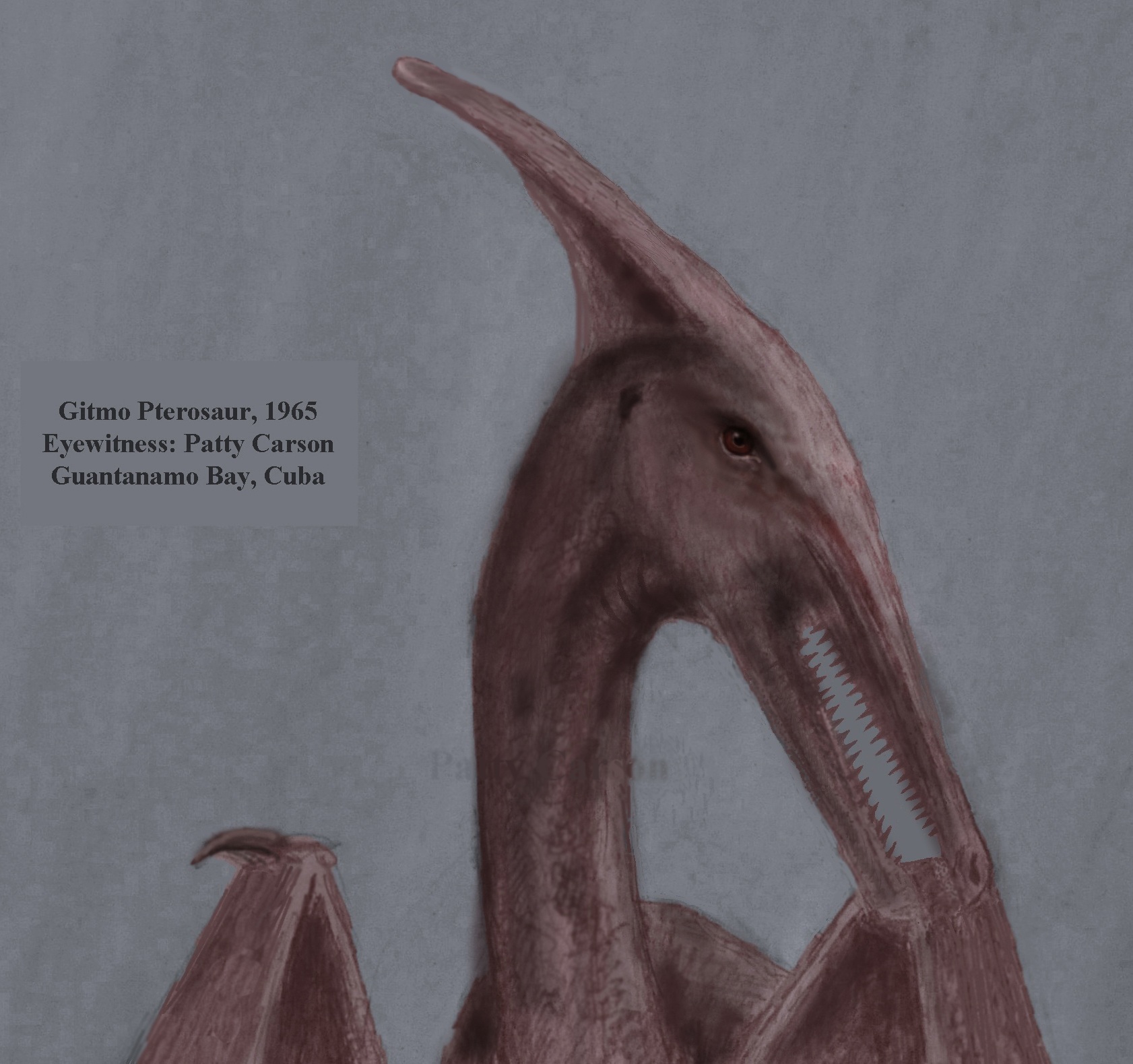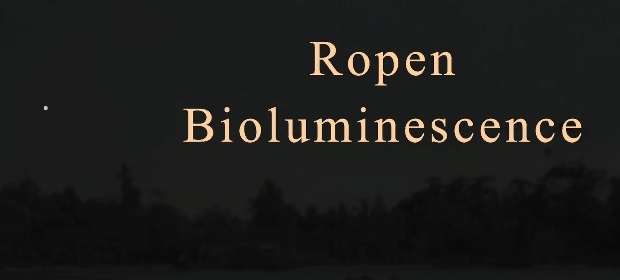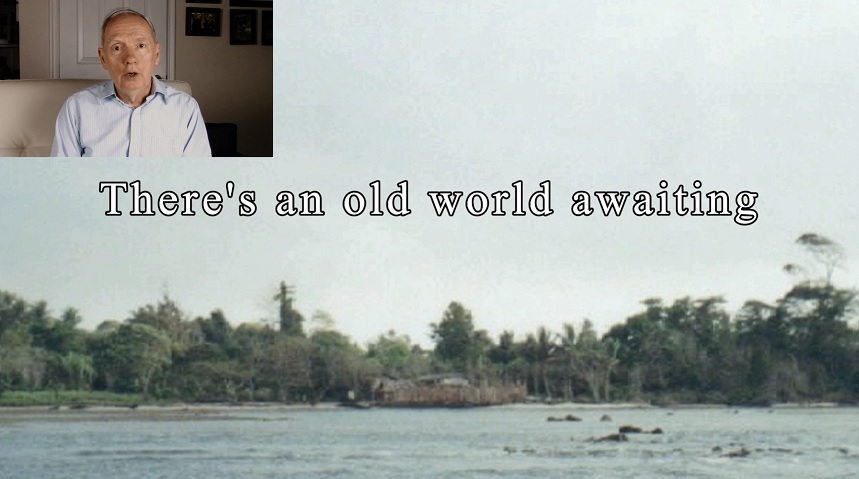By the nonfiction author Jonathan Whitcomb
Last week I uploaded to Youtube a video on the strange flying lights that have long been seen in Papua New Guinea, observed by both PNG natives and Westerners.
Ropen Bioluminescence
You can watch this short video (3 min, 20 sec), so rather than list what’s in it, I’ll go into more details about these flying lights by answering three questions that are based upon comments people have sent me over the years.
Question #1:
Could they be airplane lights?
Answer:
A physicist did a deep analysis of the two lights videotaped in 2006 by the explorer Paul Nation and found that they could not be lights from airplanes; they were a completely different kind of light.
In addition, the respected biologist Evelyn Chessman, early in the 20th century, observed many of the lights from a distance, in the dark of night, and that was long before planes commonly flew over New Guinea, even in daylight. In fact, those lights had a mountain range behind them, meaning they were flying quite low, and they were only slightly above the tops of the trees in that jungle.
Even in modern times, people do not see many airplanes flying, at the same time, at night just above the treetops, where there is no airport.
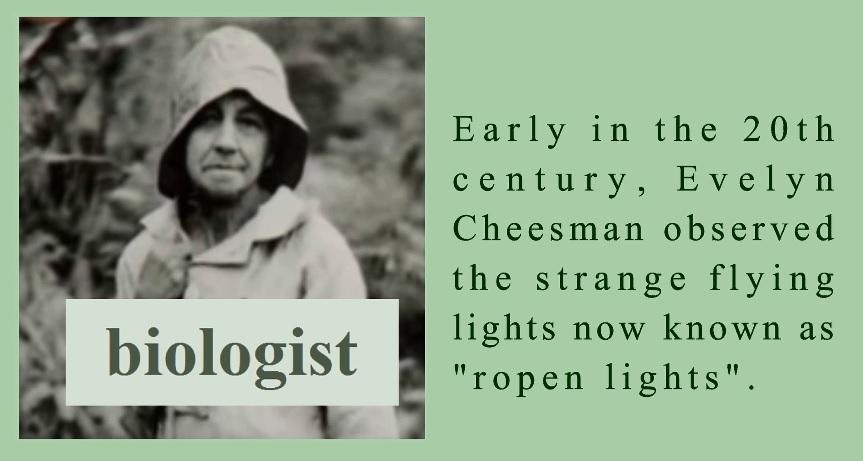
Question #2:
Could they be fireflies?
Answer:
Evelyn Cheesman was an entomologist (specializing in the study of insects). If there had been any possibility that she had observed fireflies, she would have mentioned it in that part of her book The Two Roads of Papua (published in 1935).
Keep in mind that she took note that the lights were brighter than a common flash light (“electric torch”), after she took into account the distance between her and those flying lights. Also, the flash duration was much longer than firefly flashes: Each light was on for between four and five seconds.
Question #3:
Why believe that the flying lights are the bioluminescence of pterosaurs?
Answer:
From the second ropen expedition of 2004 on Umboi Island, we know many details from interviews with two natives: Jonathan Ragu and Jonah Jim. Garth Guessman took detailed notes and later gave a copy of the interview forms to me, Jonathan Whitcomb.
Two things stand out together in the reports from those two eyewitnesses:
- A large flying creature was glowing
- The silhouette sketch chosen was for the Sordes pilosus
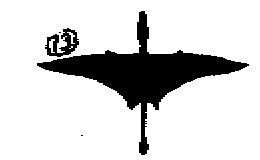
The above silhouette sketch was one of 34 images (of birds, bats, and pterosaurs) on one page of paper used by the two cryptozoologists David Woetzel and Garth Guessman on Umboi Island in 2004. Both Jonah Jim and Jonathan Ragu chose this one, silhouette #13, for the shape of the large glowing flying creature observed.
Neither man was aware of the choice of the other man when the selections were made. To the best of my knowledge, of the natives interviewed during that expedition, none of the other eyewitnesses had nearly as clear a view as those two had, neither were they able to give nearly so sure an indication for the ropen’s body shape. The large number of images shown to those two natives (34) makes it highly unlikely that they had both independently chosen #13 at random.
By the way, the Sordes pilosus known by paleontologists from fossils is (or was) a Rhamphorhynchoid, a long-tailed pterosaur.
###
.
A British biologist sees ropen lights
She later wrote about the mystery in her book The Two Roads of Papua (published in 1935)
.
Videos about living pterosaurs
On the Youtube channel Protect Animal Life you can watch dozens of videos on these amazing flying creatures.
.
Living pterosaurs in newspapers
Last night, I uploaded a new video to Youtube, “Living Pterosaurs – in newspapers” and present it as an introduction to such newspaper articles. I believe it makes a good start in answering questions about such news publications, yet I hope to produce one or more additional videos about apparent extant “pterodactyls” in newspapers.
.
Ropen lights
Another report of flying lights has surfaced, this one from a wilderness area of Oregon. It seems that the mysterious lights that have been reported to fly over the Yakima River in the state of Washington—those are also seen to fly over a river in Oregon, reported by two cryptozoologists from the Portland area.
.
Flying Dinosaur
This is a short Youtube video featuring two eyewitnesses of modern pterosaurs: Harriet Sconce and Duane Hodgkinson.
.
Glowing Ropen
Let’s compare the words of four witnesses: three natives on Umboi Island and one British biologist on the mainland of New Guinea. Each describes flying lights: on two sides of Umboi and on the mainland to the west of Umboi.
.



